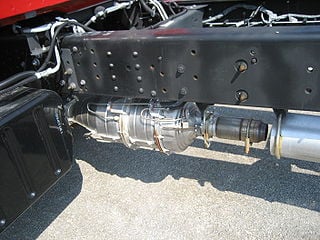Lately, there has been no shortage of news concerning air quality in the San Joaquin Valley of California. And, yet, another air-pollution-related news story from the SJV surfaces.
![Fireplace_Burning[1]](https://alankandel.scienceblog.com/files/2012/12/Fireplace_Burning1-300x225.jpg)
The National Ambient Air Quality Standards (NAAQS) for PM 2.5 are 35 micrograms per cubic meter of air averaged over 24 hours as set by U.S. Environmental Protection Agency in 2006 and 12 micrograms per cubic meter averaged annually as set by the EPA in 2012. Exceeding these thresholds means not meeting the standards. These two standards replaced previous standards of 65 and 15 micrograms per cubic meter of air, respectively, both established in the late 20th century in 1997.
Sadly, the SJV won’t meet even old 1997 standards, and according to a The Fresno Bee “Earth Log” report in order to be in compliance, fine particulate matter pollution in the Valley must be reduced by 5 percent per year, that is, until said standards are met.
Bottom line: Valley air must be cleaned – period. However, should even the old federal standards not be met by the deadline, in this case Dec. 31, 2015 the Valley risks $2.5 billion in federal highway funds being with-held.
You read it right.
I have been over this ground before and, just recently, as a matter of fact. The idea of receiving funding for polluting highways for air compliance is so ill-conceived in my view and here’s why.
Others may disagree, but freezing funding for highways seems right under any circumstance, irrespective of whether PM 2.5 standards are attained or not. If anything, money should be allocated toward getting motorists to cut back on driving, not encouraging more of it, which is exactly what highway expansion does. It’s called “induced demand.”

By air quality standards not being met, this should prompt increased funding, not a reason to shut off the funding spigot. Monies could be directed to allow consumers to upgrade to cleaner-running, more fuel-efficient vehicles. This goes by another name; it’s called “incentivization.” Moreover, funds could be provided to public transit agencies to help improve existing bus and rail systems, or investing in enhanced bus or adding newer fixed-guideway mobility options where none had previously existed such as streetcar, lightrail or personal or group rapid transit networks. In fact, bring the transit funding on!
But to dump money into highway infrastructure as a reward for getting SJV air to a state of healthy repair and then after making said roadway improvements all the while expecting the air to stay healthy, tell me: What am I missing?!
Since much of the fine particle pollution comes from the transportation sector, especially in the Valley, it makes sense to increase transportation funding as a means to mitigate it.
That said, I’m completely flummoxed by the current scheme. Transportation decision-makers: What is your thinking here?!
There is much, much more about this situation here.
Lower image above: Dana60Cummins
– Alan Kandel